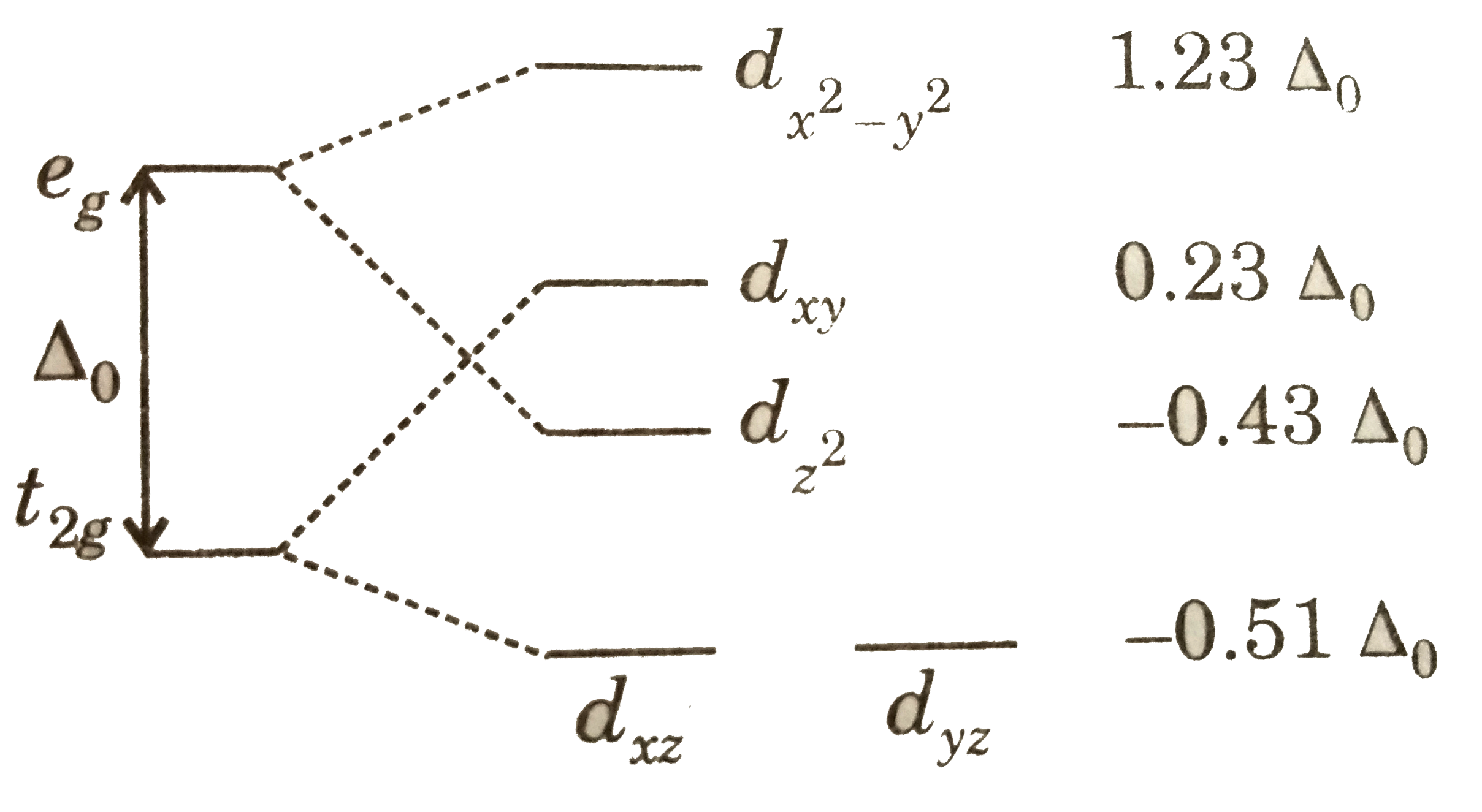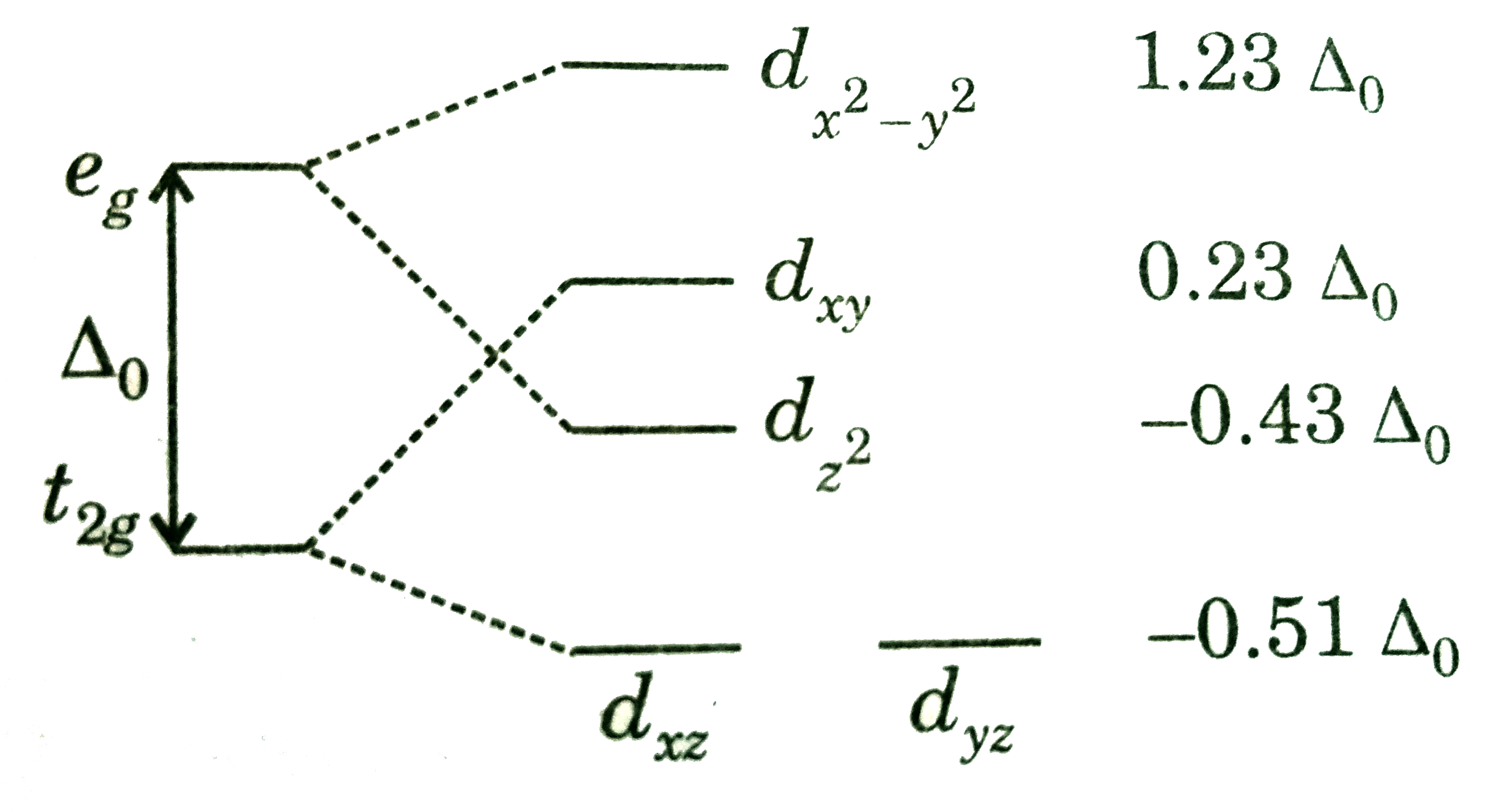The splitting diagram for square planar complexes is more complex than for octahedral and tetrahedral complexes and is shown below with the relative energies of each orbital.

Calculate crystal field stabilisation energy for a diamagnetic square planar d8 metal complex with the help of above diagram neglecting pairing energy (P)
−2.88Δ0
−2.44Δ0
−1.65Δ0
−4.84Δ0
The correct Answer is:B
d2xz,d2yz,d2z2,d2xy=d8
CFSE=4×(−0.51Δ0)+2×(−0.4Δ0)+2×(0.23Δ0)
=−2.44Δ0
Topper's Solved these Questions
- COORDINATION COMPOUNDSBook:GRB PUBLICATIONChapter:COORDINATION COMPOUNDSExercise:COMPREHENSION 40
Explore 2 Videos
- COORDINATION COMPOUNDSBook:GRB PUBLICATIONChapter:COORDINATION COMPOUNDSExercise:COMPREHENSION 41
Explore 2 Videos
- COORDINATION COMPOUNDSBook:GRB PUBLICATIONChapter:COORDINATION COMPOUNDSExercise:COMPREHENSION 38
Explore 2 Videos
- CHEMICAL KINETICSBook:GRB PUBLICATIONChapter:CHEMICAL KINETICSExercise:Subjective Type
Explore 63 Videos
- D-BLOCK ELEMENTSBook:GRB PUBLICATIONChapter:D-BLOCK ELEMENTSExercise:Subjective Type
Explore 18 Videos
Similar Questions
The splitting diagram for square planar complexes is more complex than for octahedral and tetrahedral complexes and is shown below with the relative energies of each orbital.

Which of the following set of de− have same crystal field stabilisation energy value for tetrahedral complex neglecting pairing energy (P) :
(P)d1,d6 (Q)d2,d7
(R)d3,d8 (S)d4,d9
(T)d5,d10
View SolutionWhat is the crystal field stabilization energy for high spin d6 octahedral complex?
View Solution
Knowledge Check
Crystal field stabilization energy for high spin d4 octahedral complex is
A−0.6Δ0B−1.8Δ0C−1.6Δ0+PD−1.2Δ0Crystal field stablisation energy for high spin d4 octahedral complex is :-
A−1.8Δ0B−0.6Δ0C−1.2Δ0D−1.6+PCrystal field stabilization energy for high spin d4 octahedral complex is
A−0.6△∘B−1.8△∘C-1.6 triangle_circ + pD−1.2△∘
What is crystal field stabilisation energy for high spin d6 configuration for octahedral & tetrahedral complexes.
View SolutionCrystal field stabilization energy for high spin d4 octahedral complex is
View SolutionCrystal field stabilization energy for high spin d4 octahedral complex is
View SolutionWhat is the crystal field stabalisation energy value of d5 configuration for tetrahedral complex ?
View SolutionIdentity the correct increasing order of crystal field stabilisation energy value for the given complexes .
View Solution